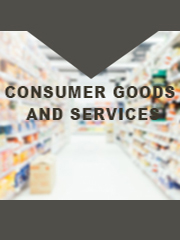TOP CATEGORY: Chemicals & Materials | Life Sciences | Banking & Finance | ICT Media

Download Report PDF Instantly
Report overview
The global Chemical Protective Clothing market was valued at US$ 1019.8 million in 2022 and is projected to reach US$ 1266.9 million by 2029, at a CAGR of 3.1% during the forecast period. The influence of COVID-19 and the Russia-Ukraine War were considered while estimating market sizes.
Chemical protective clothing helps safeguard men and women from chemical hazards that can and can't be seen, such as dangerous vapors, liquids, and particles.
This report aims to provide a comprehensive presentation of the global market for Chemical Protective Clothing, with both quantitative and qualitative analysis, to help readers develop business/growth strategies, assess the market competitive situation, analyze their position in the current marketplace, and make informed business decisions regarding Chemical Protective Clothing. This report contains market size and forecasts of Chemical Protective Clothing in global, including the following market information:
Global Chemical Protective Clothing Market Revenue, 2018-2023, 2024-2032, ($ millions)
Global Chemical Protective Clothing Market Sales, 2018-2023, 2024-2032, (K Units)
Global top five Chemical Protective Clothing companies in 2022 (%)
The European chemical protective clothing market accounted for the largest market share in 2017. The dominance of Europe in the market is attributed to stringent safety-related legislations in the region. The Latin American chemical protective clothing market is expected to witness high growth during the forecast period. The emerging petrochemical and pharmaceutical industry in the region is pushing the use of chemical protective clothing in the region.
We surveyed the Chemical Protective Clothing manufacturers, suppliers, distributors and industry experts on this industry, involving the sales, revenue, demand, price change, product type, recent development and plan, industry trends, drivers, challenges, obstacles, and potential risks.
Total Market by Segment:
Chapter 1: Introduces the definition of Chemical Protective Clothing, market overview.
Chapter 2: Global Chemical Protective Clothing market size in revenue and volume.
Chapter 3: Detailed analysis of Chemical Protective Clothing manufacturers competitive landscape, price, sales and revenue market share, latest development plan, merger, and acquisition information, etc.
Chapter 4: Provides the analysis of various market segments by type, covering the market size and development potential of each market segment, to help readers find the blue ocean market in different market segments.
Chapter 5: Provides the analysis of various market segments by application, covering the market size and development potential of each market segment, to help readers find the blue ocean market in different downstream markets.
Chapter 6: Sales of Chemical Protective Clothing in regional level and country level. It provides a quantitative analysis of the market size and development potential of each region and its main countries and introduces the market development, future development prospects, market space of each country in the world.
Chapter 7: Provides profiles of key players, introducing the basic situation of the main companies in the market in detail, including product sales, revenue, price, gross margin, product introduction, recent development, etc.
Chapter 8: Global Chemical Protective Clothing capacity by region & country.
Chapter 9: Introduces the market dynamics, latest developments of the market, the driving factors and restrictive factors of the market, the challenges and risks faced by manufacturers in the industry, and the analysis of relevant policies in the industry.
Chapter 10: Analysis of industrial chain, including the upstream and downstream of the industry.
Chapter 11: The main points and conclusions of the report.